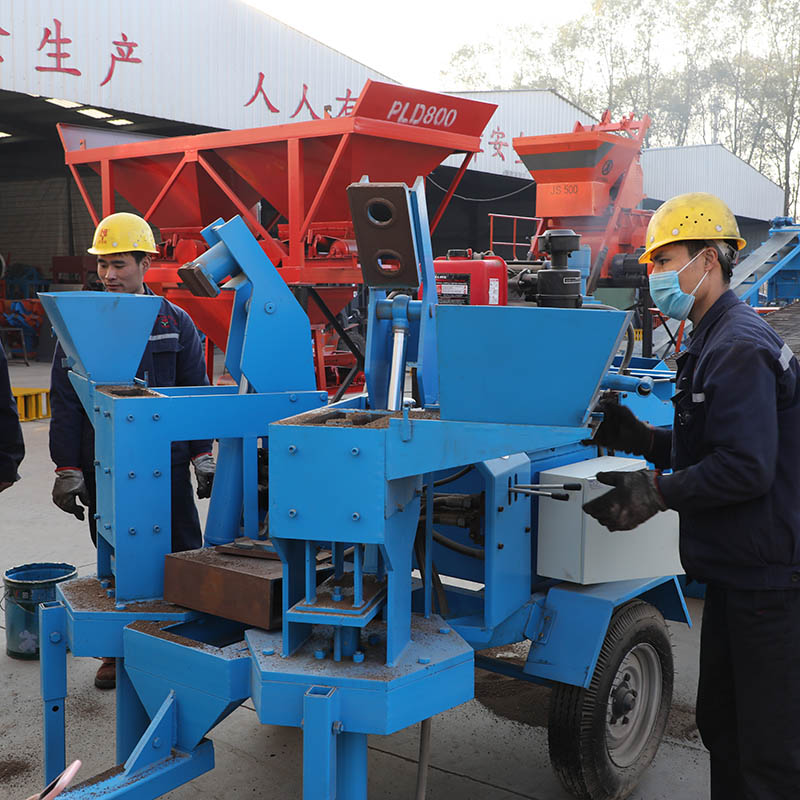
Image source:Aiwei block machine
Introduction
Brick production, a cornerstone of construction worldwide, plays a significant role in shaping our built environment. However, as global awareness of environmental sustainability grows, the environmental impact of traditional brick manufacturing methods has come under scrutiny. This article examines the environmental considerations in brick production through the lens of two distinct case studies: China and the Democratic Republic of Congo (DRC). By contrasting these two countries, we can better understand the challenges, innovations, and future directions in sustainable brick manufacturing.
1. The Environmental Footprint of Traditional Brick Production
Traditional brick production processes often involve resource-intensive and polluting practices.
- Resource Depletion: Traditional methods rely on vast amounts of clay and other natural resources.
- Emissions: High-temperature kilns emit pollutants and greenhouse gases, contributing to air pollution and climate change.
- Deforestation: The demand for firewood in kilns contributes to deforestation, impacting ecosystems and biodiversity.
2. China’s Strides Towards Sustainable Brick Production
China, with its booming construction industry and commitment to sustainability, provides a compelling case study.
- Regulatory Measures: China has implemented stringent regulations to curb emissions and resource consumption.
- Technological Innovations: Cleaner kiln technologies and advanced firing techniques reduce pollution and energy consumption.
- Recycled Materials: Some Chinese brick manufacturers incorporate recycled materials into their production processes.
3. Case Study: The DRC’s Sustainable Brick Revolution
In the DRC, where urbanization and environmental challenges intersect, a sustainable brick revolution is taking place.
- Resource Constraints: Limited access to traditional brick-making resources necessitates innovative solutions.
- Local Material Utilization: The DRC utilizes locally available materials like stabilized soil for brick production.
- Economic Empowerment: Sustainable brick production initiatives empower local communities and entrepreneurs.
4. Technological Advancements and Digital Integration
Both China and the DRC are exploring technological solutions to reduce the environmental impact of brick production.
- China’s Digital Transformation: Integration of IoT, AI, and data analytics optimize resource use and production processes.
- DRC’s Low-Tech Solutions: In areas with limited access to advanced technology, low-tech solutions prioritize sustainability.
5. Circular Economy and Waste Reduction
Circular economy principles offer a pathway to reducing waste and enhancing sustainability in brick production.
- Recycling Bricks: Deconstruction and recycling of old buildings provide a source of reclaimed bricks.
- Waste Management: Efficient waste management practices minimize the environmental impact of brick production.
6. Community Engagement and Capacity Building
Environmental considerations in brick production extend beyond technology to community engagement.
- Awareness and Education: Raising awareness about sustainable practices among brick makers is vital.
- Skill Development: Training programs empower brick makers with the knowledge to adopt sustainable methods.
7. Economic and Social Impacts
Sustainable brick production brings about economic and social benefits in both China and the DRC.
- Employment Opportunities: Sustainable practices create job opportunities in brick production and related industries.
- Community Upliftment: Empowering local communities fosters economic growth and development.
8. Future Prospects and Collaborative Solutions
The future of sustainable brick production lies in collaborative efforts between nations, industries, and communities.
- Global Exchange: Sharing best practices and innovations between countries can accelerate progress.
- Research and Innovation: Investment in research can yield breakthroughs in cleaner and more efficient brick production.
Conclusion: Paving the Way for Sustainable Brick Production
Environmental considerations in brick production are no longer optional; they are essential for the health of our planet and the prosperity of our societies. Through case studies from China and the DRC, we witness the dual forces of regulation and innovation driving change. These countries exemplify how environmental consciousness can spur technological advancements, empower local communities, and promote economic growth. As the world seeks to build sustainably, the lessons from these case studies illuminate the path towards a future where bricks, an age-old construction material, play a pivotal role in shaping a greener and more sustainable built environment for generations to come.
